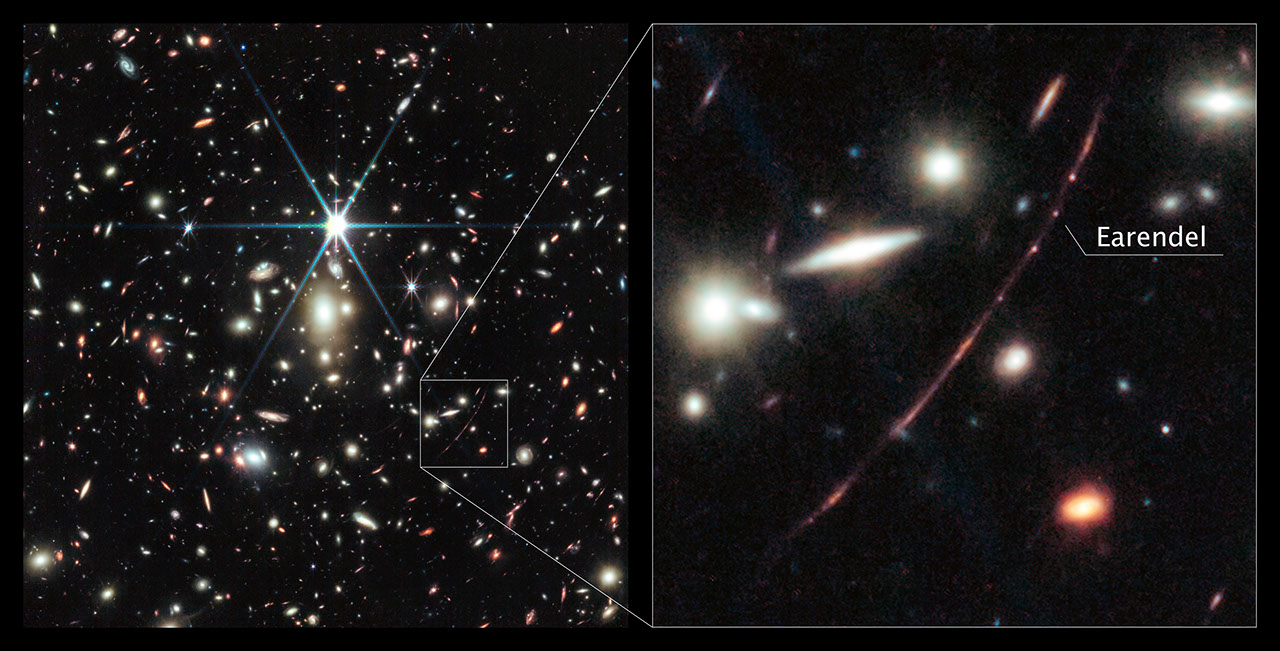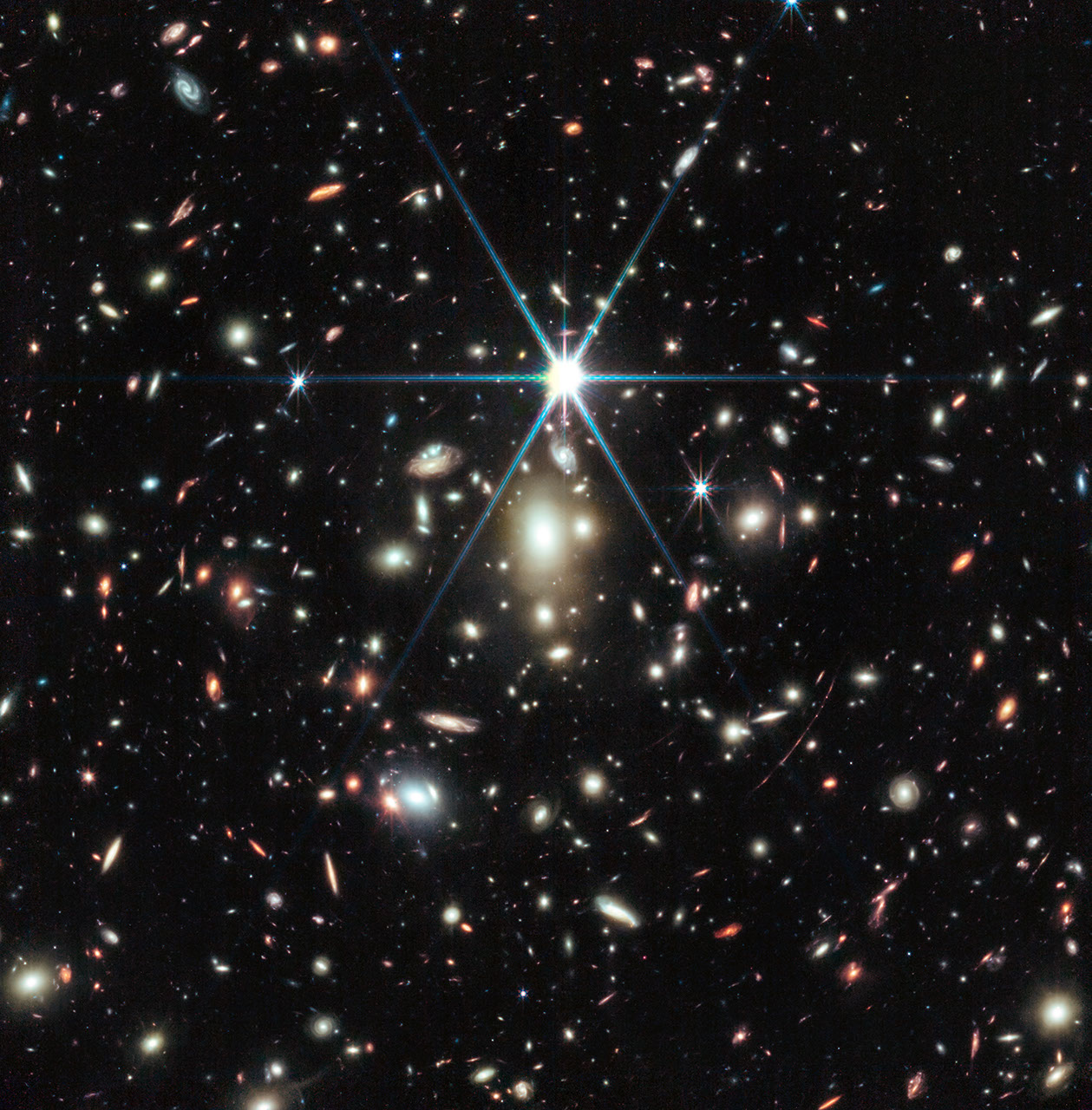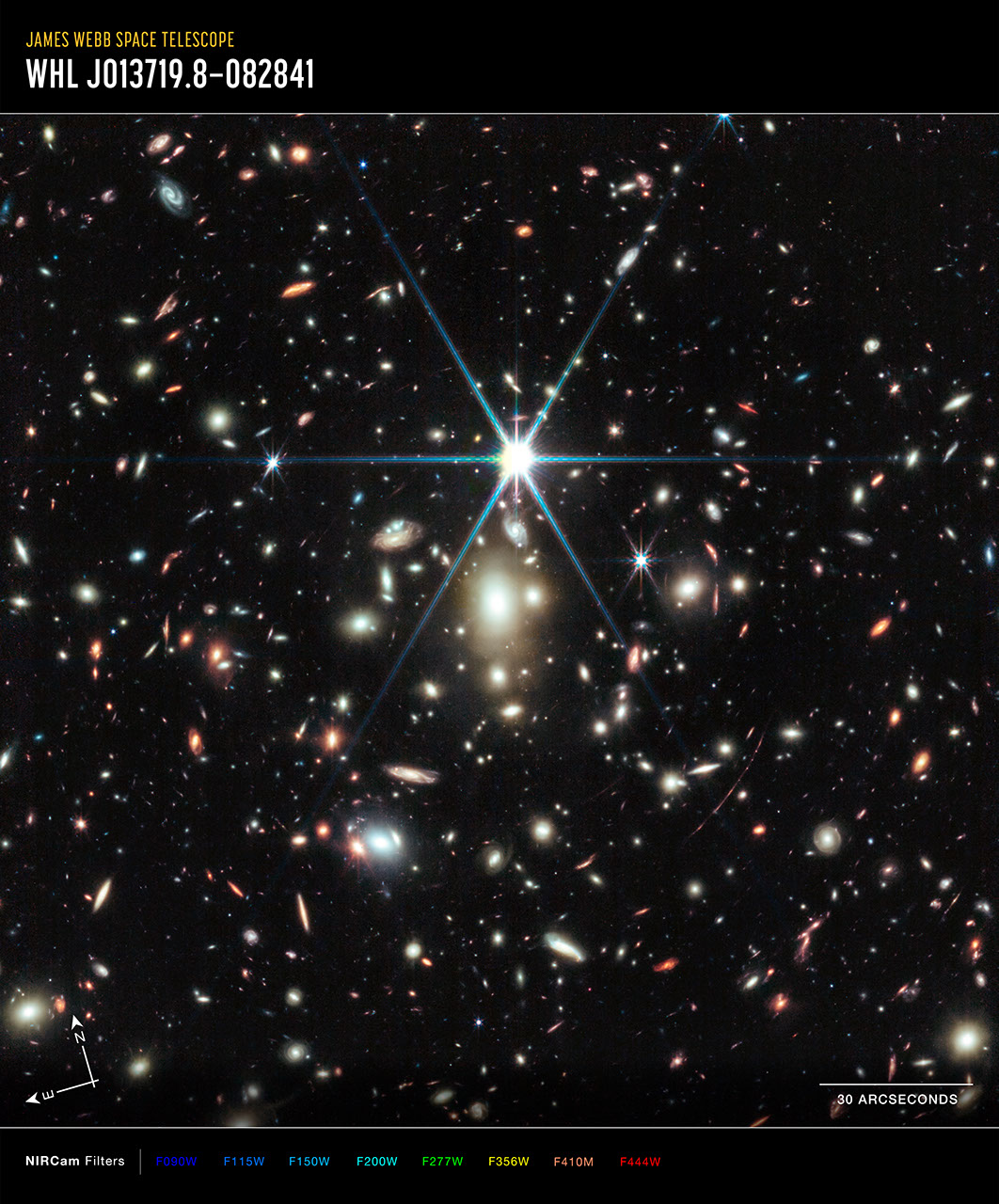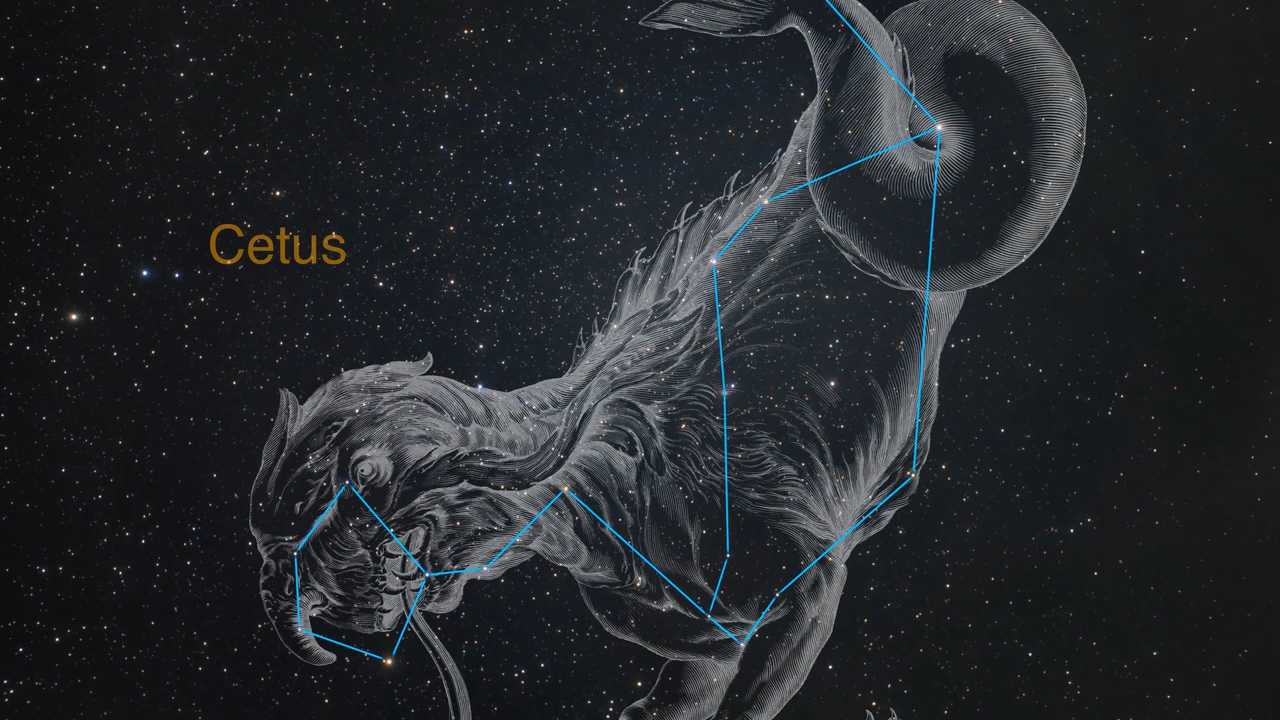1 min read
Sunrise Arc Zoom-In (NIRCam Image)

This image from NASA’s James Webb Space Telescope shows a massive galaxy cluster called WHL0137-08, and at the right, an inset of the most strongly magnified galaxy known in the universe’s first billion years: the Sunrise Arc. Within that galaxy is the most distant star ever detected, first discovered by the Hubble Space Telescope.
Webb’s NIRCam (Near-Infrared Camera) instrument reveals the star, nicknamed Earendel, to be a massive B-type star more than twice as hot as our Sun, and about a million times more luminous. Stars of this mass often have companions. Astronomers did not expect Webb to reveal any companions of Earendel since they would be so close together and indistinguishable on the sky. However, based solely on the colors of Earendel detected by Webb, astronomers think they see hints of a cooler companion star.
About the Object
- R.A. PositionR.A. PositionRight ascension – analogous to longitude – is one component of an object's position.01:37:23.23
- Dec. PositionDec. PositionDeclination – analogous to latitude – is one component of an object's position.-08:27:52.20
- ConstellationConstellationOne of 88 recognized regions of the celestial sphere in which the object appears.Cetus
- DistanceDistanceThe physical distance from Earth to the astronomical object. Distances within our solar system are usually measured in Astronomical Units (AU). Distances between stars are usually measured in light-years. Interstellar distances can also be measured in parsecs.The star is approximately 12.9 billion light-years away.
About the Data
- Data DescriptionData DescriptionProposal: A description of the observations, their scientific justification, and the links to the data available in the science archive.
Science Team: The astronomers who planned the observations and analyzed the data. "PI" refers to the Principal Investigator.This image was created with Webb data from proposal: 2282 (J. Coe)
- InstrumentInstrumentThe science instrument used to produce the data.NIRCam
- Exposure DatesExposure DatesThe date(s) that the telescope made its observations and the total exposure time.30 July 2022, 01 Jan 2023
- FiltersFiltersThe camera filters that were used in the science observations.F090W, F115W, F150W, F200W, F277W, F356W, F410M, F444W
- Object NameObject NameA name or catalog number that astronomers use to identify an astronomical object.WHL-J24.3324-8.477, Earendel
- Object DescriptionObject DescriptionThe type of astronomical object.Galaxy cluster with gravitational lensing and distant star
- Release DateAugust 9, 2023
- Science ReleaseWebb Reveals Colors of Earendel, Most Distant Star Ever Detected
- CreditImage: NASA, ESA, CSA; Science: Dan Coe (STScI/AURA for ESA, JHU), Brian Welch (NASA-GSFC, UMD); Image Processing: Zoltan Levay
Downloads

This image is a composite of separate exposures acquired by the James Webb Space Telescope using the NIRCam instrument. Several filters were used to sample specific wavelength ranges. The color results from assigning different hues (colors) to each monochromatic (grayscale) image associated with an individual filter. In this case, the assigned colors are: Blue: F090W + F115W + F150W, Cyan: F200W, Green: F277W, Yellow: F356W, Orange: F410M, Red: F444W
Related Images & Videos

Sunrise Arc (NIRCam Image)
This image from NASA’s James Webb Space Telescope of a massive galaxy cluster called WHL0137-08 contains the most strongly magnified galaxy known in the universe’s first billion years: the Sunrise Arc, and within that galaxy, the most distant star ever detected. The star,...

Sunrise Arc (NIRCam Compass Image)
This is an image of the WHL0137-08 galaxy cluster, which includes the Sunrise Arc galaxy, with compass arrows, scale bar and color key. The north and east compass arrows show the orientation of the image on the sky. Note that the relationship between north and east on the sky...

Zoom to the Sunrise Arc
Travel to the massive galaxy cluster called WHL0137-08, which contains the most strongly magnified galaxy known in the universe’s first billion years: the Sunrise Arc, and within that galaxy, the most distant star ever detected. The journey begins with a ground-based image by...
Share
Details
Laura Betz
NASA’s Goddard Space Flight Center
Greenbelt, Maryland
laura.e.betz@nasa.gov
NASA, ESA, CSA
Dan Coe (STScI/AURA for ESA, JHU), Brian Welch (NASA-GSFC, UMD)
Zoltan Levay






























